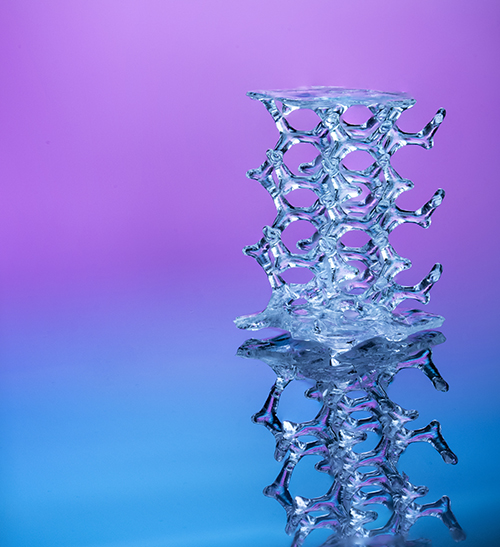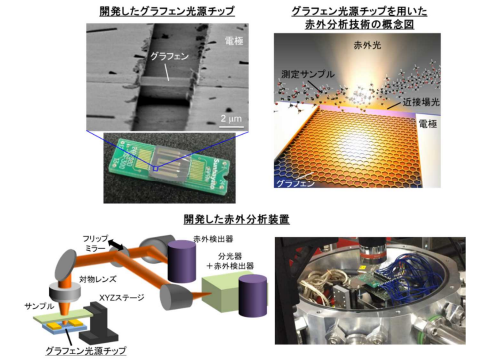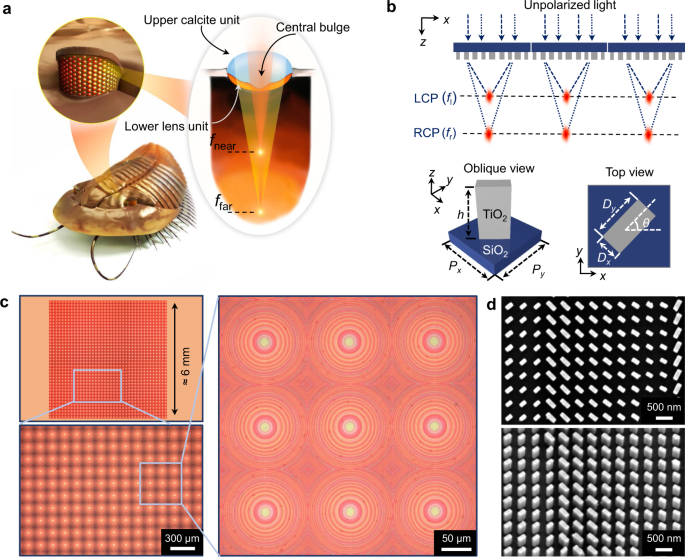2022-04-19 ローレンス・リバモア国立研究所(LLNL)

Researchers at Lawrence Livermore National Laboratory and the University of California, Berkeley demonstrated the ability to 3D-print microscopic objects in silica glass through volumetric additive manufacturing (VAM), part of an effort to produce delicate, layer-less optics that can be built in seconds or minutes. Image by Adam Lau/Berkeley Engineering.
・CAL(Computed Axial Lithography)技術は、CT(Computed Tomography)イメージング手法に着想を得ている。CALは、対象物のデジタルモデルを多方向から投影し、計算で最適化した後、デジタル投光器で回転する感光性樹脂の体積に投影する。投影された光のパターンは、時間とともに材料内の3次元光量分布を再構築(ビルドアップ)し、樹脂槽が回転しながら光の閾値を超える箇所で対象物を硬化させる。
・従来のレイヤーを重ねる3Dプリント技術よりもはるかに速く、わずか数秒で完全に形成されたオブジェクトができあがります。
・LED光源の代わりにレーザーを使用するマイクロCALという新しいマイクロスケールVAM技術と、ドイツのグラスオマー社とフライブルク大学が開発したナノ複合ガラス樹脂を組み合わせ、最小50ミクロンまでの特徴を持つ表面粗さわずか6ナノメートルの丈夫で複雑な微細構造ガラスオブジェクトの製造を報告した。
<関連情報>
- https://www.llnl.gov/news/new-laser-based-volumetric-additive-manufacturing-method-can-3d-print-glass-seconds
- https://www.science.org/doi/10.1126/science.abm6459
マイクロスケール計算機軸リソグラフィーを用いたシリカガラスの体積積層造形法 Volumetric additive manufacturing of silica glass with microscale computed axial lithography
JOSEPH T. TOOMBS,MANUEL LUITZ,CAITLYN C. COOK,SOPHIE JENNE,CHI CHUNG LI,BASTIAN E. RAPP,FREDERIK KOTZ-HELMER AND HAYDEN K. TAYLOR
Science Published:14 Apr 2022
DOI: 10.1126/science.abm6459
Abstract
Glass is increasingly desired as a material for manufacturing complex microscopic geometries, from the micro-optics in compact consumer products to microfluidic systems for chemical synthesis and biological analyses. As the size, geometric, surface roughness, and mechanical strength requirements of glass evolve, conventional processing methods are challenged. We introduce microscale computed axial lithography (micro-CAL) of fused silica components, by tomographically illuminating a photopolymer-silica nanocomposite that is then sintered. We fabricated three-dimensional microfluidics with internal diameters of 150 micrometers, free-form micro-optical elements with a surface roughness of 6 nanometers, and complex high-strength trusses and lattice structures with minimum feature sizes of 50 micrometers. As a high-speed, layer-free digital light manufacturing process, micro-CAL can process nanocomposites with high solids content and high geometric freedom, enabling new device structures and applications.



